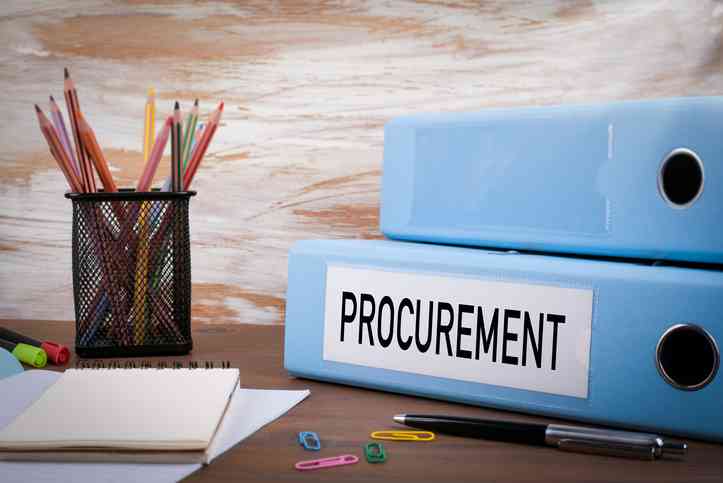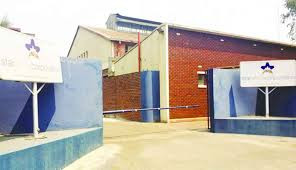
IT would appear the old competitive bidding practices are overly focussed on perfectly legitimate concerns about prices, but it is increasingly becoming clear that price reduction is not the holy grail of procurement.
Savvy supply chain professionals will tell you that price is not everything. Often times your suppliers will adhere to contract terms and conditions by invoicing you within the agreed low pricing structures but that counts for nothing if the service provided, or the product supplied is way off the mark or substandard.
The major focus of procurement as a function today and into the future has become less about cost control. Cost control approaches are seemingly rooted in the distant past without offering much required vision into the future.
Too much focus on single item price reduction remains trapped in decades-old paradigms that have prevailed over many years which are, however, slowly losing relevance in today’s business environment.
Granted, price has always been the king of the vendor castle, but it counts for little if the low-price supplier struggles to deliver the right goods and services at the right time at the right place.
In procurement, the lowest price does not always equate to best value. It has always been known that price seldom reflects the total cost of doing business.
Lower costs at the time of purchase will probably just capture only a fraction of the value of the product. Yes, cost savings will always remain a key variable, but lasting value is much more important for lasting competitive advantage.
Others will often argue that a supplier can have the lowest price but in some cases with the lowest quality of work, too. The price for poor quality or poor delivery can be too high in the long run.
- A dispassionate look into StanChart’s Zimbabwe exit
- Govt committed to support local manufacturing industry
- Govt committed to support local manufacturing industry
- 'Women must be accountable in business'
Keep Reading
The capacity of the business to be agile in a highly competitive business environment is a function of a robust supply chain network not a low-price supply chain network.
The creation of a reliable supply chain network is the first major step in insulating the business against supply chain disruptions. The cost of making a poor supplier selection decision based on lower prices can have far reaching consequences for the business.
Procurement practitioners should put in extra effort to find, qualify and utilise suppliers of repute. Suppliers are slowly becoming secret competitive weapons, which provide competitive advantages to many supply chain networks at every turn of the handle.
The success of many companies becomes ever more a function of supply chain capabilities inherent in the chain. The supply chain ecosystem could easily be regarded as the sole differentiator for competitive advantage.
Therefore, measuring supplier performance will assist in improving the competitiveness of business organisations the world over.
Supplier performance evaluation programmes have been credited for measuring the delivery track record of suppliers, measuring price competitiveness of suppliers, improvement of lead time management of suppliers, assisting in the reduction of defects while at the same time contributing to product development efforts.
The major importance of supplier performance evaluation is to generate a high-level visual overview of supplier performance with a view to establish a low-risk, best-in-class vendor and supply chain portfolio.Procurement professionals need to have a finger on the pulse of their key suppliers. It will allow them to determine supplier competitive trends and supplier performance insights at a glance.
Supply chain performance management should, therefore, be transformed in profound fashion to become a linchpin of a supply chain management strategy.
The major focus of attention should be to uncover opportunities for cost reduction, risk mitigation and continuous improvement with a view to establish risk-free sources of high-quality goods.
It is often observed that the performance of a supplier may start off with relatively no challenges but overtime it may deteriorate. Late deliveries or non-deliveries may begin to manifest far and in between, but such challenges can easily snowball into serious bottlenecks overtime, leaving the company in a significant bind at the detriment of the company’s brand equity.
In supply chain, past performance should generally be a good indicator of future performance, but past performance can only be ascertained through regular supplier performance evaluation processes.
Procurement professionals can rely on site meetings and site visits as part of their supplier performance evaluation. The time and cost of conducting site visits can be high but a site visit to the supplier’s facility could be the nearest answer to ascertain performance levels.
It is generally encouraged to make unannounced random site visits to enhance the opportunity to review the activities of the supplier on an ordinary production day.
Site visits can give supply chain professionals the opportunity to assess the intangible aspects of the supplier’s operations such as the organisational work culture and to assess quality control processes.
Supplier evaluation programmes are generally regarded as holistic assessments based on verifiable quantitative and qualitative metrics designed to measure what suppliers are capable of bringing to the business.
In supply chain, it is often said; your best supply chain partners today could easily be your problem children tomorrow. Regular supplier evaluations are therefore necessary to identify those suppliers that will have run their course.
Since supplier evaluation processes is the first stage in converting potential suppliers into indispensable trusted key partners, at some point it may increasingly become clear that the performance levels have decreased and continue to decrease.
It may be time to ask the following question - does the supplier still have the willpower to go “above and beyond” to meet customer expectations. At this juncture, supplier performance management should not be about maintaining performance standards.
It should be about seeking to promote performance above and beyond expectations. Supplier performance evaluation should at this point concentrate on supplier continuous improvement initiatives to deliver products and or services at a consistent level of quality, quantity and reasonable cost over time.
As part of the supplier evaluation programmes, it may be necessary to evaluate the supplier’s design and engineering capabilities, the supplier’s production capacity and the supplier’s logistical networks, with a view to drive heightened performance in the supply chain.
Supply chain professionals that regularly evaluate supplier performance will have better visibility. They will remove hidden costs within the chain. They will have a glass pipeline of what happens within the chain. They will reduce their order cycle times. They will be able to assess the capacity of the supplier to scale deliveries up and down based on the requirements of the hour.
This will obviously promote the strength of future success in line with the strategic intent of most supply chain networks. Supplier performance evaluation can also assist in evaluating how easy it is to place your orders and how quickly the supplier responses to your procurement cycles.
It is, therefore, critical to always review performance metrics such as overall delays and the average response time of the supplier, separating the few critical suppliers from the marginal many.
Procurement professionals are required to conduct poor-performance-to-cost ratio with a view to calculate the percentage of potential profitability lost to poor performance.
Instead of waiting for your vendors to play catch-up, ongoing supplier evaluation processes should trigger red flags. It may be based on trigger metrics such as late deliveries and or poor quality of goods.
Playing catch-up after stalled production does not and will not help anyone. There is a need to take corrective decisive actions to prevent potential problems from snowballing into disruptive calamities.
Supplier performance evaluation metrics could also be used for gauging the growth trajectory, it can assist in identifying peaks and dips.
It is very important to measure the performance of your suppliers with a view to measure how well they stack up against the supply chains of competitors.
Supplier performance management must also focus on calculating the invisible hard dollar savings from those suppliers willing to proffer a helping hand during product development.
We all know that suppliers can be regarded as the sources of best practice knowledge. Suppliers that are always prepared to collaborate with your business in product development or innovative ways of process improvements are your unsung heroes.
Such qualitative value addition strategies must be acknowledged as and when supplier performance evaluation exercises are conducted.
It is of paramount importance to partner with supply chain partners with extensive industry knowledge and mastery of contemporary issues with a view to heighten productivity.
In business, measurement is often regarded as halfway to performance improvement.
Supplier performance evaluation is just as important as annual performance review of employees. Supply chain performance evaluation should therefore be conducted as part of a regular drill. It should be never regarded as a one-time wonder.
Supplier evaluation will only become meaningful where performance deliverables and expectations were clearly spelt out right from the onset.
Refrain from using supplier performance management systems that are reactive in that they report what has happened, not what is likely to happen. There is no supplier that will be happy to be treated just like another supplier, same way no worker wants to be treated just like any other resource.
In conclusion, it must be noted that a myriad of key factors seems to be converging, creating the perfect storm in this highly competitive business environment.
It, therefore, calls upon supply chain ecosystem to collaborate more and more. Your organisation’s pursuit for excellence should mesh with those of your supply chain partners.
Creating a positive experience focussed on mutual respect though objective supplier performance is the need of the hour. Supplier performance evaluation will assist in the identification of suppliers that are willing to, and capable of working for collective success.
Supplier evaluation processes are always important for ensuring that your supply chain partners share your priorities to the spirit and intent of the shared vision.
Such kind of supply chain partners would be the best pick if you are able to identify them. Sharing a common vision promotes strategic alliances that have the capacity to promote greater improvements in productivity than the short-term cost savings offered by the traditional arm’s length competitive bidding processes. Without a shared vision, it may lead to incompatible priorities. The depth of mutually beneficial values can lead to trust, mutual concern and a collaborative mindset.
For those in procurement, if your company is not performing regular supplier performance reviews, you may not be alone but what is important at this juncture is to take course correction measures in good time, making sure that your supplier evaluation processes are aligned to best practices.
Commercial experience has demonstrated that companies cannot be more responsive to their customers unless their suppliers are equally more responsive. Procurement professionals who are literate in this new language will create sustainable value turning a world of uncertainty into a world of possibilities.
Failure to implement supplier evaluation processes has left a lot of gaping holes in an overly exposed supply chain system. The overall prognosis is not obviously pleasing to the eye of the profession. Problems can become opportunities when supply chain partners come together with the collective mindset of improving performance. The cumulative effect on business performance over time can be substantial.
- Nyika is a supply chain practitioner based in Harare. — [email protected].











